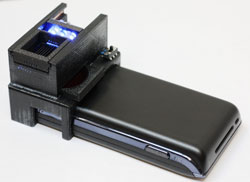06 March 2012
A mobile phone that could detect whether leftovers in your fridge are safe to eat could be heading to an app store near you. A device has been developed that attaches to mobiles and can detect small amounts of E. coli in liquid samples.
The scientists published their findings in the latest edition of the Royal Society of Chemistry journal Analyst.
Outbreaks of E. coli pose a huge threat to health, especially in developing countries. Most strains of E. coli are harmless but some strains however, such as enterohaemorrhagic E. coli (EHEC), can cause severe foodborne disease, according to the World Health Organisation. E. coli is transmitted to humans primarily through consumption of contaminated foods, such as raw or undercooked ground meat products, raw milk and contaminated raw vegetables and sprouts.
As existing detection devices are often expensive and complex, an accurate and efficient detection device could be extremely popular. There are more than five billion mobile phones on the planet and 70 per cent of these are in the developing world.
Hongying Zhu and colleagues at the University of California, Los Angeles, developed a device able to take advantage of this technology. Zhu told the RSC's Chemistry World magazine: "Our cell phone based platform would be very useful to bring advanced technologies to remote and resource poor locations" adding that the phone provides "a ubiquitous platform for conducting advanced micro-analysis wherever cell phones work".

© Ozcan Research Lab at UCLA
The device consists of glass capillary tubes with light emitting diode (LED) lights on either end. E. coli antibodies are fixed to the sides of the capillaries and trap any E. coli present in a liquid sample. Secondary antibodies and quantum dots are then added to the capillaries and these bind to the trapped E. coli, capturing the bacteria in a sandwich complex.
The LED lights excite the quantum dots, causing them to emit fluorescent light. The light emission is captured by the phone camera as pictures of the capillaries are taken approximately once a second.
The team tested the device using water samples and milk and were able to selectively detect low concentrations of E. coli, even in the presence of other bacteria species. Zhu intends to develop the device so one phone could be used to detect different bacteria.


















